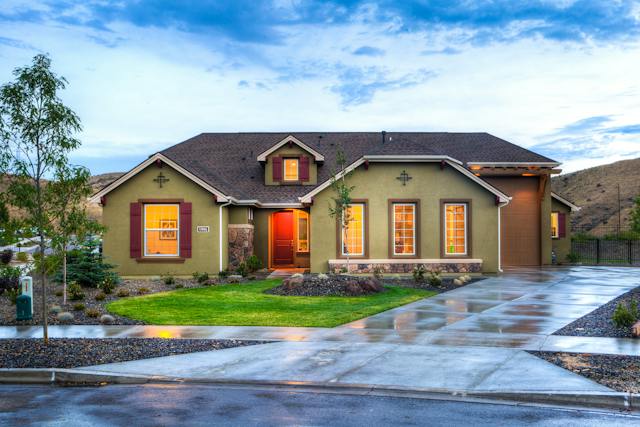A roof leak is every homeowner’s silent adversary, often unnoticed until it wreaks havoc. Unaddressed, it can cause extensive damage to your home, from structural weakening to interior water damage and mold growth. This guide is an essential tool in your home maintenance arsenal, aiming not just to help you identify and fix common roof leaks, but also to empower you with the knowledge and techniques to nip these problems in the bud. By understanding the signs, causes, and effective remedies for roof leaks, you can safeguard your home against potential disasters, ensuring its longevity and peace of mind.
Understanding Roof Leaks
Roof leaks can stem from a myriad of issues, including damaged shingles, improper installation, or a lack of maintenance. These leaks, if left unchecked, can escalate into major structural problems. Recognizing the early signs of a leak is therefore crucial for the health of your home. Keep an eye out for tell-tale signs like water stains on ceilings, mold growth, or dampness in the attic. Additionally, peeling paint, discolored growths on exterior walls, or an unexplained musty odor in certain rooms can also indicate a hidden leak. Staying vigilant about these subtle cues can save you from extensive and expensive repairs in the future.
Regular Roof Inspections
Regular inspections are a cornerstone in the battle against roof leaks. It’s advised to inspect your roof at least twice a year, and importantly, after any major storm, which can cause immediate and severe damage. During these inspections, be thorough in your approach: look for missing, cracked, or curling shingles, damaged flashing, or any signs of wear and tear. Don’t overlook the smaller details, such as loose or exposed nail heads, signs of rust or rot, or granules from shingles accumulating in gutters. These can be early indicators of potential problems. Additionally, checking for blockages in your gutters and downspouts is also vital, as these can lead to water accumulation and damage over time. A proactive inspection routine can be the key to catching issues early and maintaining the integrity of your roof.
Identifying Common Leak Sources
Shingle Damage: Damaged or missing shingles are a common leak source, often the first sign of roof distress. Inspect your shingles regularly, especially after a storm, for any signs of deterioration or wear. Even minor shingle damage can escalate quickly, so prompt attention is essential for prevention.
Flashing: Flashing around chimneys, vents, and skylights is critical and can corrode or become loose over time, leading to leaks. Regularly check and ensure these areas are well-sealed, intact, and in good condition to prevent water intrusion and protect your home.
Gutters and Downspouts: Clogged or damaged gutters can cause water to pool on your roof, leading to leaks. Ensure that gutters and downspouts are kept clean, clear of debris, and in good repair to facilitate proper drainage and prevent water damage.
Valleys: The valleys, critical junctions where two roof planes come together, can collect water and debris, leading to leaks. It’s essential to ensure they are clear of debris, well-maintained, and properly sealed to prevent any water infiltration.
DIY Leak Repairs
Replacing Damaged Shingles: If you find damaged shingles, carefully remove them and replace them with new ones. Ensure they are properly nailed down and sealed, following manufacturer guidelines to maintain roof integrity and prevent future leaks.
Sealing Flashing: If the flashing is the problem, re-seal it with a roofing cement to restore its waterproof barrier. In cases of severe damage, completely replacing the flashing is advisable to ensure long-term protection against water ingress.
Unclogging Gutters: Clean your gutters regularly to prevent blockages, which can lead to serious water damage. Consider installing gutter guards to reduce maintenance and ensure consistent, effective water flow away from your roof.
Sealing Valleys: Apply a layer of roofing cement along the valley to seal any gaps, ensuring a watertight barrier. Before applying the sealant, ensure the valley is clean and free of debris for optimal adhesion and effectiveness.
Preventive Measures
Regular Maintenance: Conducting regular roof maintenance can prevent leaks. This includes cleaning gutters, inspecting shingles, and ensuring proper insulation and ventilation in the attic.
Professional Inspections: While DIY inspections are helpful, having a professional inspect your roof can identify potential issues that might be missed.
Quality Materials: Use high-quality roofing materials. They might be more costly upfront, but they withstand the elements better and last longer.
Proper Installation: Ensure that any roof work is done by qualified professionals. Improper installation can lead to leaks and other issues down the line.
When to Call a Professional
While some roof repairs can be handled as DIY projects, others decidedly require professional attention. If you’re unsure about a repair, if the damage is extensive, or if the roof is steep, high, or otherwise challenging, it’s crucial to prioritize safety and effectiveness by calling in a professional, such as Mona Roofing contractors. Additionally, professionals like Mona Roofing contractors can offer warranties, ensure compliance with building codes, and provide expert assessments that might reveal underlying issues not apparent to the untrained eye.
Conclusion
Preventing and fixing roof leaks is essential for maintaining the integrity and value of your home. Regular inspections, prompt repairs, and preventive maintenance are key strategies that can save you from costly damages in the long run. Proactive care ensures not just a dry and safe home but also peace of mind. Remember, when in doubt, consulting with a roofing professional is always a wise decision. Their expertise can help ensure that your home remains in top condition, safeguarding your investment and your comfort for years to come.
